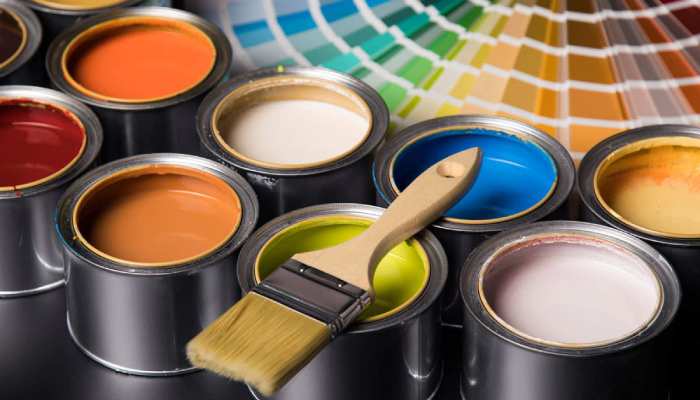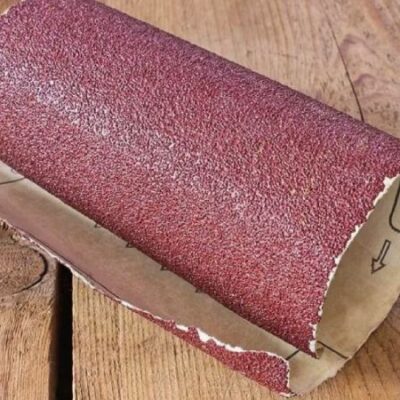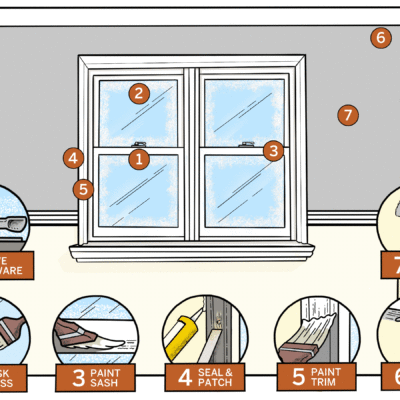What goes into making paint, exactly?

You probably don’t give much thought to the paint’s composition or manufacturing process until you grab a roller or brush and apply it to your walls. You don’t see paint solvents, resins, and pigments mixed in a facility; instead, imagine your gorgeous new living room, bedroom, or kitchen. Still, painters who spend enough time at the easel may begin to wonder what causes paint to act the way it does. Understanding how paint is made and what goes into it is far from being a theoretical exercise with no real-world relevance.
What does latex paint consist of, exactly?
It’s amazing how lovely a gallon of freshly mixed paint in your ideal hue can be. Remove the top of the paint can with the can opener, stir the contents with the wooden stir stick, and enjoy the show as the paint runs down the stir stick. The paint appears to be a single material due to its silky texture, rich coloration, and uniform consistency.
If you leave the same paint for nine months in the basement, however, it will disclose its actual structure and tell an entirely another narrative. A liquid on top is almost completely clear and has nothing to do with the sample color dot on the cap. When the stick is pressed to the bottom, it meets a dense, seemingly impenetrable solid mass.
Most DIY homeowners choose latex paint because it’s easy to apply and comes in various colors. The product’s technical data sheet always specifies whether an individual can of paint is mostly solids or mostly liquids. Approximately 57% of a gallon of flat paint, for instance, might be composed of solids.
On the opposite end of the glossy range, semi-gloss solids paint may weigh just around 51%. Even at this early stage, you can see how to paint’s components affect your walls. More solids are to blame for the powdery appearance and feel of flat or matte paint.
The Solids’ Transporter, or Solvents
The solvent is the paint’s liquid body, the medium that transports and breaks down the other components. Latex paints require water, which is why it is sometimes referred to as “the universal solvent.” Mineral turpentine is often used as a solvent for oil-based paints. The drying time of paint is a direct result of the presence of solvents in the mixture.
All the water in water-based latex paint dries on your wall, ceiling, or another surface and must evaporate for the paint to cure. This is because paint takes longer to cure in damp and cold circumstances and may even fail.
Pigment binders are known as resins.
Although water plays a role in keeping the solids in water-based latex paint soluble, the resins ultimately bind everything together and dry the paint after it has been applied to the surface. Acrylic emulsion polymers are often used as resins in latex paints.
Pigments: Color
Color is created in paint by adding pigments. The first form that pigments are available in is a powder. Pigments come from various sources; titanium dioxide makes white, carbon black is responsible for black, and metallic salts provide oranges and yellows, to name a few. Colorants are the name given to the water-borne pigments used in the paint dispersion process.
Increased Paint Durability Through Additives
Paint additives are a group of supplementary materials used to enhance the paint’s physical characteristics. Some paints have additives added to them to prevent brush strokes, prevent mold development, speed up drying time, and strengthen the paint so it won’t droop. Moreover, after the paint has been purchased, the end user can include additives. Brush marks may be eliminated with common additives sold under the trade names Penetrol and Floetrol.
Calculating the Right Amount of Paint to Use
Calibrated vats are used to measure raw liquids and dry materials by bulk weight or volume, much as measuring cups are used to measure out dry and wet components for cooking.
Initiation of a Mill Base
To make the mill foundation, raw pigments are ground up and mixed until they form a powder.
Abandoning Resistance
Resins, solvents, and additives are mixed in a separate vat during the let-down process. Combining
The mill’s base and its let-down output are blended.
Deliveries to the Cannery District
The canning division receives ready supplies by truck. The reception section of a warehouse is where dry goods are carried in while liquids are pumped into storage silos or tanks.
Mixing
The paint is made by combining several materials in large tanks.
Labeling
Once empty paint cans are received at the facility, they are processed by machines that attach labels.
Filling
There are two types of paint cans, one gallon and five gallons. Hence the equipment that fills them is different.
Palletizing
Finally, the sealed cans are packed and loaded onto shipping pallets.









